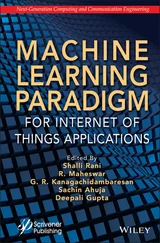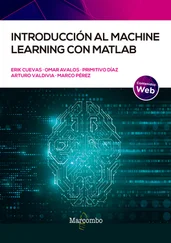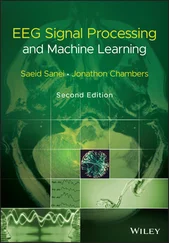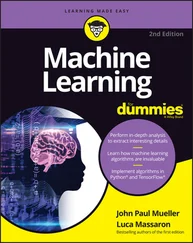1. Bjartveit, K. and Tverdal, A., Health consequences of smoking 1–4 cigarettes per day. Tobacco Control , 14, 5, 315–320, 2005.
2. Weng, C.-H., Huang, T.C.-K., Han, R.-P., Disease prediction with different types of neural network classifiers. Telematics Inf. , 33, 2, 277–292, 2016.
3. Alpaydın, E., Introduction to Machine Learning , 2nd edition, the MIT press, Cambridge, Massachusetts, 2010.
4. Harris, J.A. and Benedict, F.G., A Biometric Study of Human Basal Metabolism. Proc. Natl. Acad. Sci. U.S.A. , 4, 12, 370–373, 1918.
5. Hirshkowitz, M., Whiton, K., Albert, S.M., Alessi, C., Bruni, O., DonCarlos, L., Hillard, P.J.A., National Sleep Foundation’s sleep time duration recommendations: Methodology and results summary. Sleep Health , 1, 1, 40–43, 2015.
6. Hung, C.-Y., Chen, W.-C., Lai, P.-T., Lin, C.-H., Lee, C.-C., Comparing deep neural network and other machine learning algorithms for stroke prediction in a large-scale population-based electronic medical claims database. 39th Annual International Conference of the IEEE Engineering in Medicine and Biology Society , pp. 3110–3113, 2017.
7. Nie, L., Wang, M., Zhang, L., Yan, S., Zhang, B., Chua, T.S., Disease inference from health-related questions via sparse deep learning. IEEE Trans. Knowl. Data Eng. , 27, 8, 2107–2119, 2015.
8. Chen, M., Ma, Y., Song, J., Lai, C., Hu, B., Smart clothing: Connecting human with clouds and big data for sustainable health monitoring, in: ACM/Springer Mobile Networks and Applications Mobile , vol. 21, 5, pp. 825–845, 2016.
9. Chen, M., Hao, Y., Hwang, K., Wang, L., Wang, L., Disease Prediction by Machine Learning over Big Data from Healthcare Communities. IEEE Access , 5, 8869–8879, 2017.
10. Sahoo, P.K., Mohapatra, S.K., Wu, S.-L., Analyzing healthcare big data with prediction for future health condition. IEEE Access , 4, 9786–9799, 2016.
11. Schmidt, S.C.E., Tittlbach, S., Bös, K., Woll, A., Different Types of Physical Activity and Fitness and Health in Adults: An 18-Year Longitudinal Study. BioMed Res. Int. , 2017, 2017.
12. Tayeb, S., Pirouz, M., Sun, J., Hall, K., Chang, A., Li, J., Latifi, S., Toward Predicting Medical Conditions Using kNearest Neighbors. IEEE International Conference on Big Data , pp. 3897–3903, 2017.
13. Mitchell, T.M., Machine Learning , McGraw Hill International Edition, New Yak City, 1997.
14. Du, Y., Gebremedhin, A.H., Taylor, M.E., Analysis of university fitness center data uncovers interesting patterns, enables prediction. IEEE Trans. Knowl. Data Eng. , 31, 8, 1478–1490, 2019.
* Corresponding author : trk@nitw.ac.in
3
Study of Neuromarketing With EEG Signals and Machine Learning Techniques
S. Pal1, P. Das1, R. Sahu2 and S.R. Dash3*
1Infogain India Pvt. Ltd., Bengaluru, India
2School of Computer Science & Engineering, KIIT University, Bhubaneswar, Odisha, India
3School of Computer Applications, KIIT University, Bhubaneswar, Odisha, India
Abstract
Neuromarketing is the most rising yet undelved technique even though it has shown immense potential. It has many uses and benefits in the commercial sector as supposedly it can tell which product has potential while analyzing your competition and also stop from manufacturing products which might fail in upcoming market trends. It is supposed to fill the gap between survey results and the actual behavior of the customer at the shop.
It has not been researched well in the past due to limitations of cost-effectiveness of an EEG device. But with the promise of cheap, portable and reliable devices like Emotiv Epoc sensors and Neurosky Mindwaves, we are now able to conduct trials and evaluation in a cost-effective, portable and fast manner in comparison to conventional EEG setups. The chapter has analyzed and studied consumers’ choice with regards to various products and found out the pattern of EEG signals using machine learning techniques according to like and dislike.
In this chapter, we have observed and conducted trials on 25 subjects. We recorded all EEG signals using Emotiv Epoc+ Sensor device with 14 channels recording EEG data from 25 volunteers while observing common products on a display. All volunteers are between 18 and 38 years of age. A set of 13 various products were displayed wherein products had 3 different brands which invariably created 42 unique product images. In total 1,050 EEG signals were captured for all the 25 volunteers. Like and dislike are labeled by each participant for the unique image during the experiment to capture the labeled emotions with their corresponding EEG data. Every product was displayed for 4 s. In the data collection, it is instructed to the volunteers to label their honest opinion towards the products. The proposed approaches have shown the feasibility towards the marketing and provide an additional method to the traditional method for forecasting a product’s performance. These machine learning methods with EEG signals may develop strategies, introduce new products, and find out inflation in the business world. We have noticed that Kernel SVM has performed better than other classifiers.
Keywords:Neuromarketing, bagging decision tree, gaussian bayes, kernel SVM, random forest, EEG signals
Brain is perhaps the most significant organ of our body which consists of billions of neurons which in turn use electric pulses for communicating among themselves. There is immense amount of electrical activity in our brain because of transmission of neuro signals in the form of electric pulses. These neuro signals are what is collectively known as brainwaves. They consist of synchronized and sequential electric pulses from neurons to various parts of our body via nerves. These brainwaves can be analyzed and detected by an equipment called Electroencephalograph. Traditionally the machines used to detect EEG signals where very large and costly but nowadays they have been miniaturized into EEG biosensors. EEG is a significant part of signal analysis because its amplitude graphs depict the various stimulations as well as brain states.
The objective of our study is empowering the users to explore the different avenues that come under the field of Brain Computer Interfaces (BCI), implementing user-friendly and economical equipment which have been recently been made viable for common public use. The domain of BCI is the influential force behind the goal of full utilization of Electroencephalography (EEG). We use electrodes on the scalp of users to record the brain activity. In the past, we have focused highly on creating solutions from a medical context, helping extreme cases of paralysis or disablement in regard to motor functions by mapping EEG signals to the respective cognitive actions.
But now BCI solutions are no longer limited to just patients for treatment, with the change in focus of general public towards living a healthier lifestyle with the aid of modern technology, young people are a prime target group who are willing to adapt to EEG devices as a dimension giving them timely updates about their mental ability and wellness. It starts with treatment and can go till far as entertainment as more and more companies start working on Mind-Controlled gaming technology. This exciting phase makes EEG to be more available, cost effective and firms become more willing to invest into this technology for general purpose uses.
One of the prime manufacturers of cost-effective EEG headsets is Emotiv with a slogan “Neurotech for the Global Community”. They have an EEG device named Emotiv EPOC+ sensor device which is a low-cost and portable headset aimed for the consumer market. Historically EEG machines were reserved for rich people but now it can be used by anyone in the shape of a user, developer or analyst. This helps us to accelerate the growth and research done in the field of BCI. The strategy of our study is to utilize this piece of technology and create viable results in Neuromarketing.
Читать дальше












